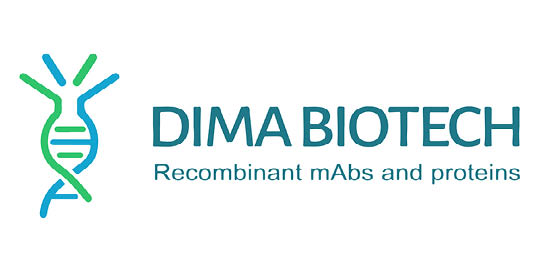Mouse CCR2 Protein, hFc Tag
Mouse CCR2 Protein, hFc Tag
Artikelnummer
DMAPME-M100107-50
Verpackungseinheit
50 µg
Hersteller
DIMA Biotechnology
Verfügbarkeit:
wird geladen...
Preis wird geladen...
Background: Enables C-C chemokine binding activity and C-C chemokine receptor activity. Involved in several processes, including leukocyte migration; positive regulation of cell migration; and regulation of cytokine production. Acts upstream of or within several processes, including cellular defense response; monocyte chemotaxis; and neutrophil clearance. Located in external side of plasma membrane. Is expressed in several structures, including alimentary system; brain; genitourinary system; hemolymphoid system gland; and liver and biliary system. Used to study Coronavirus infectious disease and age related macular degeneration. Human ortholog(s) of this gene implicated in several diseases, including Kawasaki disease; aggressive periodontitis; coronary artery disease (multiple); glucose metabolism disease (multiple); and uveitis (multiple). Orthologous to human CCR2 (C-C motif chemokine receptor 2). [provided by Alliance of Genome Resources, Apr 2022]
Description: Recombinant mouse CCR2 protein with C-terminal human Fc tag
Molecular Weight: The protein has a predicted molecular mass of 32.3 kDa after removal of the signal peptide. The apparent molecular mass of mCCR2-hFc is approximately 35-55 kDa due to glycosylation.
Storage & Shipping: Store at -20°C to -80°C for 12 months in lyophilized form. After reconstitution, if not intended for use within a month, aliquot and store at -80°C (Avoid repeated freezing and thawing). Lyophilized proteins are shipped at ambient temperature.
Tag: C-Human Fc tag
Expression Host: HEK293
Formulation & Reconstitution: Lyophilized from sterile PBS, pH 7.4. Normally 5 % - 8% trehalose is added as protectants before lyophilization. Please see Certificate of Analysis for specific instructions.
Target: CCR2
Uniprot ID: P51683
Usage: Research use only
Molecular Characterization: Mouse CCR2(Met1-Ala55) hFc(Glu99-Ala330)
Purity: The purity of the protein is greater than 95% as determined by SDS-PAGE and Coomassie blue staining.
Description: Recombinant mouse CCR2 protein with C-terminal human Fc tag
Molecular Weight: The protein has a predicted molecular mass of 32.3 kDa after removal of the signal peptide. The apparent molecular mass of mCCR2-hFc is approximately 35-55 kDa due to glycosylation.
Storage & Shipping: Store at -20°C to -80°C for 12 months in lyophilized form. After reconstitution, if not intended for use within a month, aliquot and store at -80°C (Avoid repeated freezing and thawing). Lyophilized proteins are shipped at ambient temperature.
Tag: C-Human Fc tag
Expression Host: HEK293
Formulation & Reconstitution: Lyophilized from sterile PBS, pH 7.4. Normally 5 % - 8% trehalose is added as protectants before lyophilization. Please see Certificate of Analysis for specific instructions.
Target: CCR2
Uniprot ID: P51683
Usage: Research use only
Molecular Characterization: Mouse CCR2(Met1-Ala55) hFc(Glu99-Ala330)
Purity: The purity of the protein is greater than 95% as determined by SDS-PAGE and Coomassie blue staining.

 English
English











